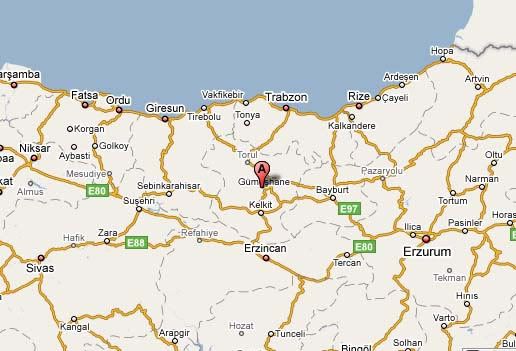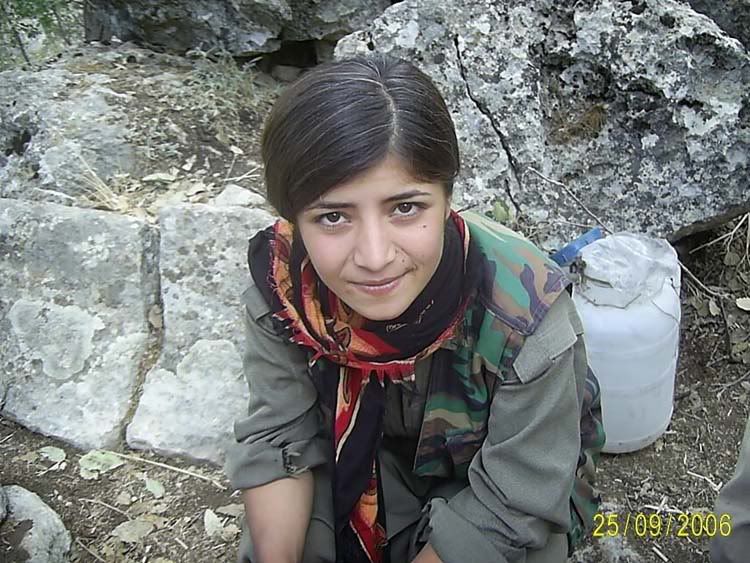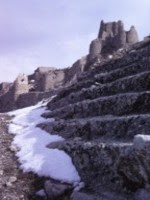 Sirnak, SE Turkey: "Happy is He Who Says, I Am a Turk."
Sirnak, SE Turkey: "Happy is He Who Says, I Am a Turk."
Long ago I read a review by John Updike of "They Burn the Thistles," by Yasar Kemal, a novel dealing, as do most of that writer's works, with the lives of Kurdish villagers in the Cukurova, the rich agricultural plain at the base of the Taurus Mountains in southern Turkey. My memories of the review are dim, but as I remember, Updike found the book heavy going. The sheer weight of human suffering and violence described in its pages soon left him surfeited. At one point he wondered how human life, in such a country, "was scarcely even possible."
I have probably not quoted Updike's words accurately, but of his sentiments I have no doubt. For I share them. It's hard to talk about this place, Turkish Anatolia, and I for one have not nearly the stamina needed to become a consistent, long-term commentator about it. The temptation is great simply to wash one's hands of people caught in such circumstances, especially among the urban and rural poor. The combination of backbreaking work, extreme poverty, a cruel social system, and a government both oppressive and relentlessly self-congratulatory, all combine to cripple many of its victims beyond hope of succor. And yet their generosity to the stranger, plus the fact that so many manage to liberate themselves--through education, hard work, and sheer luck--and, moreover, to actually go forth into the world and make real and positive contributions, means that for me, at least, the history and people of Anatolia are just too special to ignore.
I found the following courtesy of Kelly Stuart, a playwright and faculty member at Columbia University. It was published on the website of Barnhill, a psychotherapy partnership in Wembley Park, England. Specifically, the page dealt with trauma and post-traumatic stress disorder, and the use of poetic language in psychotherapy to treat it. Nazim's is a simple story, one that could be told by many millions of village boys and girls. I imagine I'm scarcely the first to feature it online. But it bears repeating. I have inserted [notes] in several places, which are explained at the end of the text. The following appears in the original paper:
The Medical Foundation Caring for Victims of Torture is a U.K. human rights organisation . Survivors and their families are provided with medical and social care, practical assistance, and psychological and physical therapy. The Medical Foundation also raises public awareness about torture and its consequences. The majority of clients are people who have fled their countries because of persecution. Interpreters are needed for much of the work, including talking therapies.
Richard McKane (poet & interpreter) and Paul Burns (psychotherapist) started to work together with Nazim, a survivor and a client of Medical Foundation, over two years ago, after the National Health Service had referred him. Nazim has also been supported at the Medical Foundation by a doctor, a psychiatrist, a neurologist, the Asylum and Legal Teams and been part of a writing group. Paul and Richard have helped Nazim to obtain better housing, education and social support in the wider community.
The original link is here:
Nazim’s Prose Memoir: A Kurdish Childhood in a Turkish Village
(Part of this account was written in a Medical Foundation Writing Group and part comes from psychotherapeutic work. Both were translated by Richard McKane.)
I came into the world unaware of the world’s badness, ugliness and beauties. I grew up in a humble family in an unfortunate village without a hospital or shop, far from the city and in winter the roads were closed for five months. If, God forbid, you got ill, either the old women would give you medicines or the Hoja [1] would read things over you and blow on you and with luck you’d live through it.
Spring was incredibly beautiful, nature became festive, the trees and flowers opened out, the meadows turned green. The birds celebrated, the waters swelled and flowed noisily. Children’s voices, birdsong and the sound of the trees swayed by the wind mixed together on all sides.
But it was a pity that we were not able to experience these beautiful things to the full as a Kurdish, Alevi child [2]. Ethnic Turks in the village looked down on Kurds, and Sunni Moslems looked down on Alevis. Often mothers or older brothers would come and break up those good childhood games or they’d move away from us and say ‘Come little one, these are dirty, bad people, don’t play with them.’ As for me I wondered what was dirty about me and couldn’t find anything. Yes, the clothes I wore were a little different, but these clothes were what my ancestors or grandparents had worn.
We had sheep and together with my elder brother we took them to graze. Before dawn my mother would come to my bedside and say: ‘Come on little one, you’ve got to go to the lambs.’ I used to say to myself: ‘God take my soul’, because I was still a child, a baby of six years old, and I had started to get to know the difficult life of looking after lambs. We were given ‘omach’, a flaky bread made by the village women which you slice and spread with butter.
We gave all the lambs different names and when we called them by their names they came up to us bleating. Believe me, there is no better thing. All your tiredness is taken away, especially when you play the shepherd’s pipe and they listen as you share your woes and talk to them. And when it’s time to go back with the sheepdog, the lambs get in a single line with you calling them behind you as they make their way home to their mothers.
I first saw a dead person at about the age of seven. Turkish soldiers brought a body down from the mountains to our village and made the adults gather round to identify it. With the other children I climbed onto the roof of a house [3] to see what was going on. I saw it was a man from the village aged about 25 who had been shot in the head and chest. The entry wound was very small and the exit wound very large. I could see the parents of the man looking on and not acknowledging that this was their son. I felt more sorry for the parents than for the son.
At the age of 8 or 9 I first witnessed my home being raided and also around this time my uncle was shot while working in his fields. Kurds in the village were pressured by the guerrillas to provide food and threatened if they did not. The Turkish authorities and forces also used terror to stop any support being given to the guerrillas.
Before I was born the village had more people but then many had left because of terrorism. Four uncles had gone to Germany, and my father went to France for four years when I was 10.
My paternal grandfather and uncle had been both been shot dead by government forces. I do not know the circumstances but they had both served long prison sentences for their political views. The Turkish authorities would not allow their relatives to bury these two men in the village. Perhaps they feared a crowd gathering to mourn. Raids on Kurdish houses became frequent, both by Army Special Forces and heavily armed police. After the age of 9 I witnessed about a raid a month while I was living in the village. A typical raid would begin early in the morning, just before it was light. Between 150 and 200 armed men would drive in trucks to near to the village then make their way on foot so as to give no warning. They would position themselves in teams of 10 to 15 at each Kurdish house, including on the roofs of the houses. Once all were in position each house would be entered at the same time without warning. Doors would be kicked in and most of the men would rush in carrying automatic rifles and begin searching all of the rooms, throwing things to the ground. They would find adults and children in bed or in nightclothes. If anyone asked what was going on or said anything else they were hit with the butt of a rifle. At other times, beatings would be inflicted at random. I regularly saw my father and other relations beaten during these raids.
The worst violence that I witnessed would take place in the village square. After some raids older men up to the age of 60 were bound hand and foot. Then with the whole village looking on they would be kicked and hit dozens of times with rifle butts and heavy belt buckles.
I was first detained and tortured when I was 15. After a raid I was taken with my parents and older brother to a police station. I was held there for three days in a bug-infested, damp and cramped cell with four others. In the cell there was a drain covered by a grill used as a urinal. The guards routinely ignored pleas for access to toilet for defecation. No food was provided. Those who had money could buy water.
Throughout the stay I could hear the screams of other people being tortured until they lost consciousness. On my first day I was taken from the cell, blindfolded, and taken to the torture room. I was made to remove all of my clothes and my hands were tied to an iron bar above me so that I was forced to stand on my toes. I was asked about guerrillas, which I did not know much about. As my answers were not the ones the interrogators wanted to hear, the beating began. I was first hit with a truncheon on my right wrist with such force that the arm was broken. When I later went to hospital for treatment of the wrist, it had to be re-broken in order to set it correctly. This wrist is still painful.
I was also hit with a wet rope on the back and then falaka [4], beating on the soles of the feet. Falaka by itself is a very painful form of torture, but after the beating stopped, I was made to put my feet into cold water. This felt like being slashed with a razor. After falaka my feet were swollen for at least 10 days and I could not put any weight on the soles of my feet.
The torture lasted about one hour altogether. I think it may have ended sooner because the torturers realised from the swelling of my wrist that they had broken it.
With torture your whole soul changes. You were a clean, innocent kid and you became a rough child out to protect yourself, Nazim. Your way of looking at other people changes. You don’t trust closeness. You can’t tell anything to even the closest people. They would be upset for someone else and they wouldn’t have anything that they could do for you.
I was tortured a second time at the age of sixteen and then at intervals I have regularly been assaulted and tortured. I have never supported violence, but in Turkey even belonging to a legitimate opposition party is dangerous. When I was conscripted into the army I was tortured for reading a liberal newspaper.
Towards the end of my time in Turkey I received death threats. If I did not become an informer I would be killed.
---------------------------------------------
[1] hoja -- village imam; religious teacher
[2] Alevi -- a sect separate from both Sunni and Shi'a Islam.
[3] roof -- village houses have flat roofs.
[4] falaka -- the bastinado








